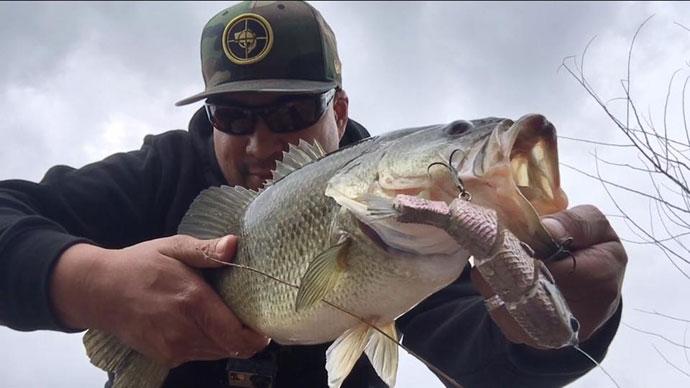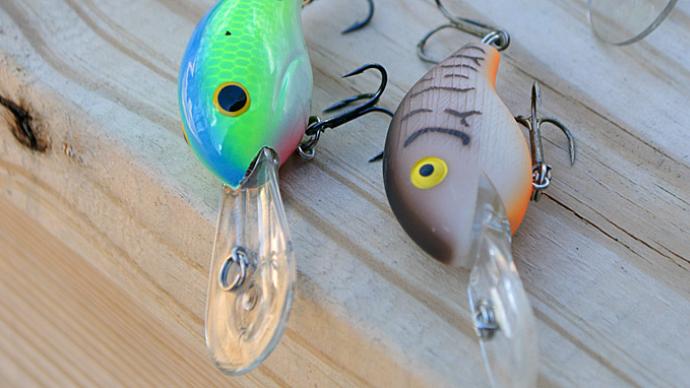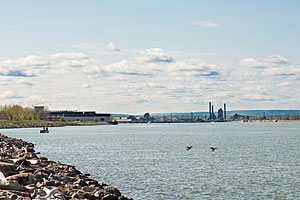
Charles Waldorf lives near Buffalo, N.Y., at Lake Erie's eastern end. He has ventured into its big water for fun and competition. He fished as a co-angler in what’s now called the Costa FLW Series and the Bassmaster Elite Series, when it included the division when they rolled into town. A full-time photographer, he’s been on other large lakes while taking pictures at FLW Tour stops. All provide the peaceful and natural setting most anglers associate with a day of bass fishing. But that’s not usually the backdrop when he gets a chance to go fishing.
Waldorf is no stranger to fishing Buffalo’s industrialized waterfront, from shore and boat. The city, with a population of more than 250,000, was once a steel-making powerhouse. Before that, it was the western terminus of the Erie Canal, a role it continues to serve for the newer New York State Barge Canal. Almost two centuries of commerce have created miles of riprap, piers, and retaining walls, not to mention marinas. Portions of the waterfront have been dredged, giving deep-draft ships enough depth to moor at piers. There’s a particular stretch that Waldorf knows well. “There was one at the corner of a pier that I fished off of,” he said. “We used to call them the sticks. There always was bass on them.”
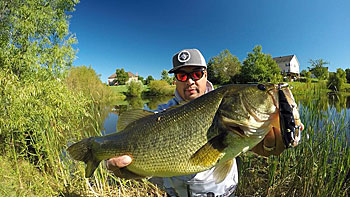
If you are one of the millions of urban dwellers, the nearby waters you may have dismissed as too developed to fish could harbor untapped schools of bass. Take New York’s Central Park, where bass swim in a lake that’s a stone's throw from the hustle and bustle created by the city that never sleeps. Michael de Avila shared its bass-fishing potential with viewers in several episodes of his television show, “Lunkerville.” He grabbed his fishing gear and hopped on the subway to the park, where he fished from shore and sometimes on a rented rowboat. Urban fishing is about rolling up your sleeves and fishing the cover and structure: rock, steel, pilings, wood, and bridge. The bass that swim around them behave like those elsewhere, and they have no choice but to use them.
Competitive bass fishing in urban areas isn’t a new concept. The 2005 Bassmaster Classic and 2009 Forest Wood Cup, which Kevin VanDam won with 12 pounds and 15 ounces and Greg Hackney with 24 pounds and 6 ounces, respectively, were held in Pittsburgh, where anglers could fish the Alleghany, Ohio, and Monongahela rivers. While those Tours regularly visit fisheries where most of the field catches more in one day than VanDam did in three, these tournaments showed that bass could be caught in the middle of the biggest and most industrialized cities.
The most famous urban Classic was held in Chicago, complete with weigh-ins at Soldier Field, in 2000. Virginian Woo Daves won with 27 pounds and 13 ounces of smallmouth that he caught on a tube jig tied to 6-pound test line. He fished an old seawall that jutted into Lake Michigan within sight of Sears Tower. At the time, he listed the retailer’s Diehard Batteries brand as a sponsor.
Ray Quijano lives north of Chicago, where he was born and raised. His dad started him fishing at a young age, catching bluegills and catfish alongside his family. Those excursions hooked him, and not much later, he wanted to fish for something else. He started getting serious about bass fishing around 2008, teaching himself the ins and outs by reading articles and watching fishing shows.
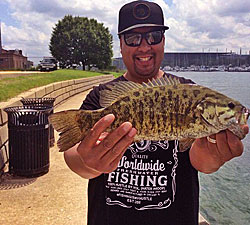
One of the shows that Quijano watched was Bassmaster Elite Series angler Michael Iaconelli’s “City Limits.” In each episode, the 2003 Bassmaster Classic winner and 2006 Bassmaster Angler of the Year and his guest would fish for bass in the middle of the country’s largest cities, from Philadelphia’s Delaware River to manmade lakes in Phoenix and Tempe, Ariz. He could relate to Iaconelli’s energetic personality and love for all things urban, from music and clothing to fishing holes.
It was then that Quijano, Del Caberto, Vince Wasseluk, and Johnny Rodas joined forces. They all had taken to bass fishing and were teaching each other the ins and outs of the sport as they pond-hopped around Chicagoland. They began posting music-style videos of their fishing adventures, introducing themselves as CAST Crew to the world.
The group evolved into today’s brand, promoting urban angling, videos, and films, including some with Iaconelli and clothing. When they first started, they wanted to wear something that represented their roots and was different from the button-up shirts most anglers were choosing. So they started designing logos and T-shirts, eventually expanding into hats and other items. Their dedication to urban bass fishing continues to drive those efforts.
Despite the weights posted at the three Classics, urban bass fishing can involve big bass and a variety of species. “It’s a mix of largemouth bass and smallmouth bass,” Waldorf said of catching on the Buffalo waterfront. He can fish for largemouth all season but sees the most and biggest smallmouth in the spring when they come shallow, looking for a protected place to spawn.
Quijano also takes advantage of the smallmouth spawning migration along Chicago’s Lake Michigan waterfront and harbors. He heads inland for largemouth. They fill small ponds perfect for bank fishing, impounded inside suburban housing developments outside the city. Both options are close to his home, so fishing is easy even if he only has time for a few casts. “I’m not bound to be out for 10 hours,” he said. “If I have to go, I can pack up and leave.”
The next fishing spot is as close as Quijano’s computer or smartphone. He brings up Google Earth, and the hunt is on for places to try. That’s not that different from other bass anglers, who use online maps to search for backwaters, points, and other bass-holding places on lakes, reservoirs, and rivers. “I fish wherever there is water,” he said. He may have to park and walk 5 or 10 minutes to get to the water at some spots, while at others, more likely in the suburbs, it’s steps from his truck. Sometimes he runs into other anglers. “It depends,” he said. “The more popular ponds and lakes get pressure. We try to find the ones tucked in the suburbs. That’s the one I’m trying to go after.”
Most suburban ponds are bowl-shaped and devoid of cover and structure. “You’ll be lucky if you find a little laydown,” Quijano said. He said that lack of protection keeps bass on the move and necessitates a fan-casting approach. It’s the opposite on Lake Michigan, where he said manmade cover, such as riprap, gives smallmouth places to hold and targets to cast at.
While he may have to search for them, Ouijano can count on the largemouth and smallmouth to react to current conditions like bass in less urban settings. They are just as slow to bite as their country cousins, for example, when high pressure or a cold front arrives, he said.
CAST Crew members comprise CAST Nation, a bass club affiliated with Wisconsin B.A.S.S. Nation. That takes Quijano and the others to tournaments on waters removed from the usual urban setting. There, he fishes water that’s much clearer than that in urban areas, which usually has a stain. But he leans on the same tactics in both situations. His go-to lure is a swim jig. By adjusting its weight, color, and trailer, he can go from largemouth to smallmouth without missing a beat. Lately, swimbaits have captured most of his attention. This is his second season throwing them, which he started as soon as the ice left.
While it’s natural for Quijano to pitch his favorite swim jig to smallies within sight of Sears Tower, it’s not common for fellow residents of the country’s third-most-populous city. They give him confused looks, especially when fishing along the Chicago River or waterfront. Most can’t believe there are fish in there. Others ask if he eats what he catches. Even his mom would ask him that question, especially after seeing pictures of his catches on Facebook. But she and the others know that his bass are released, and it’s about enjoying the sport rather than a meal. It’s one-way CAST Crew is expanding bass fishing to new places and audiences.


